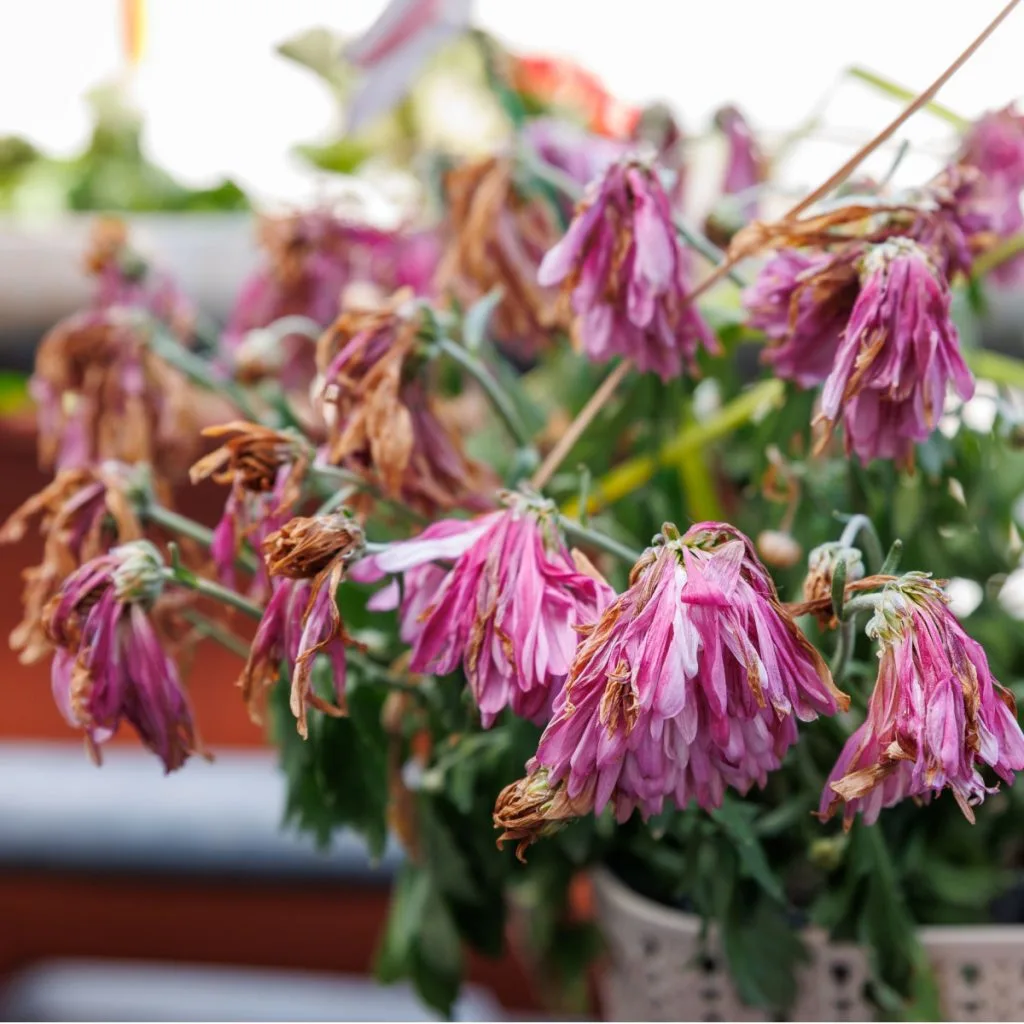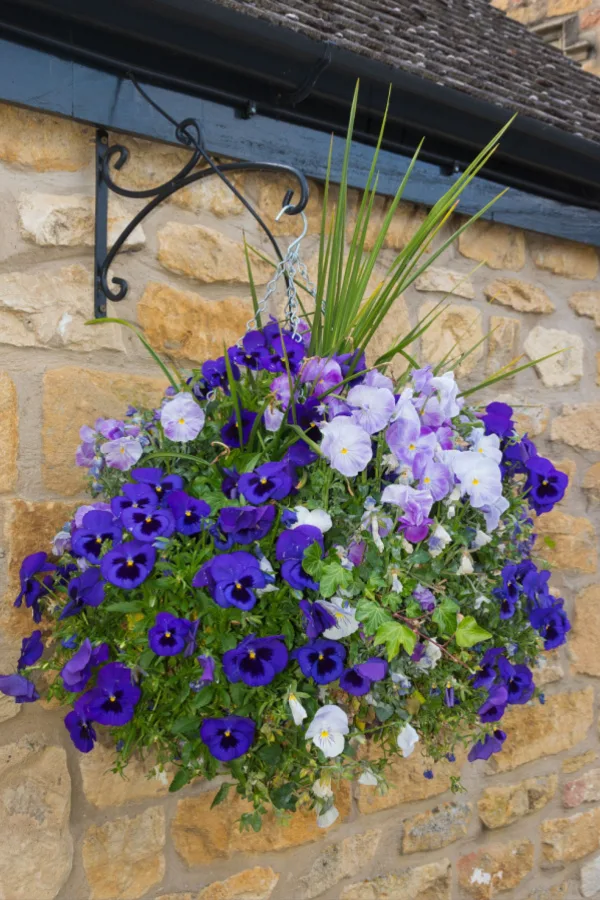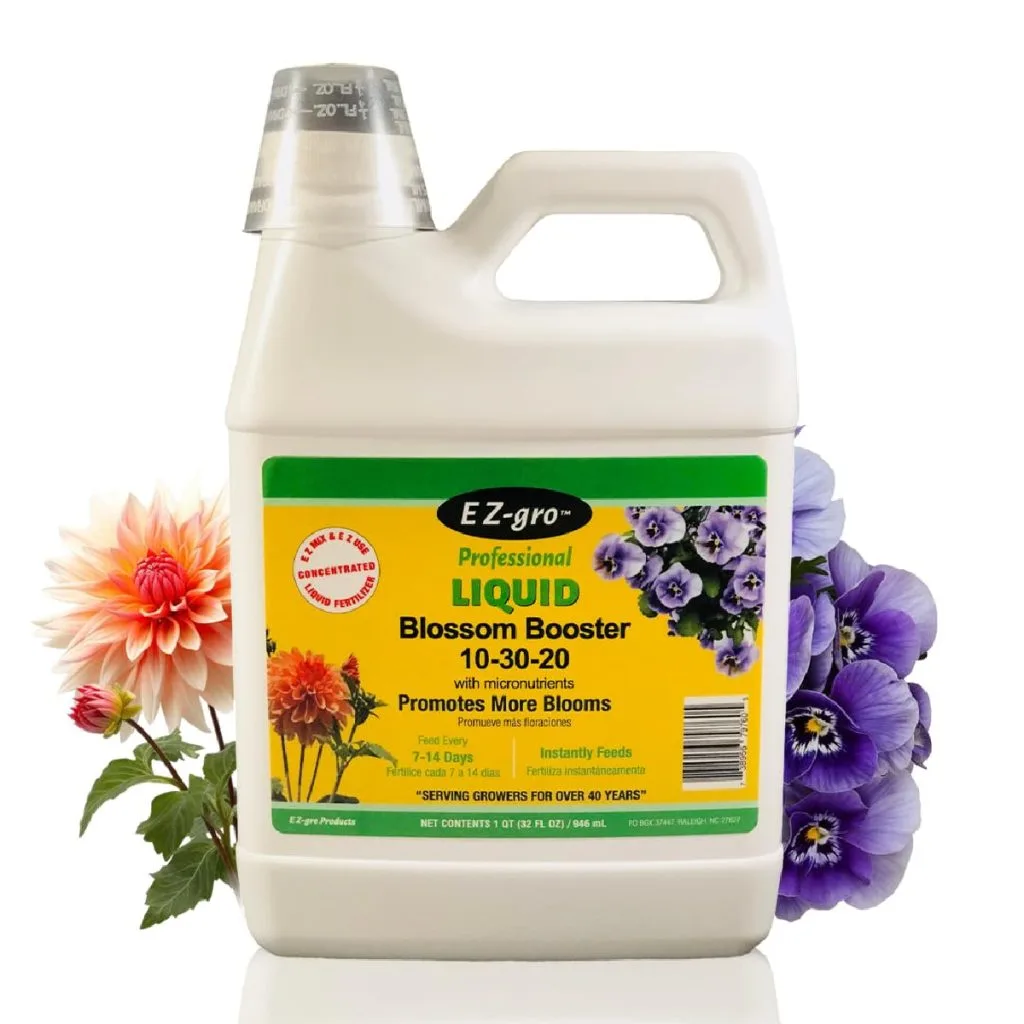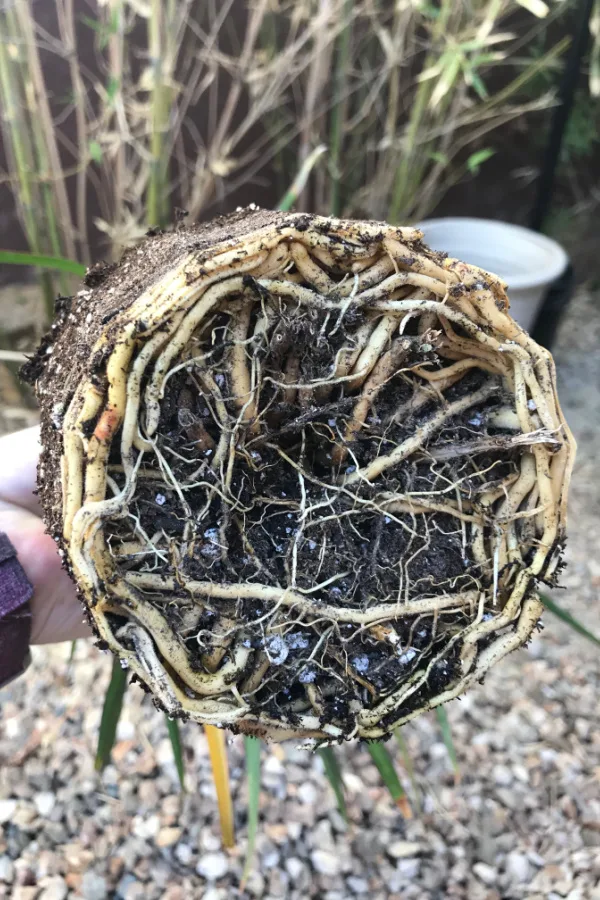Looking for a few tips and tricks to save your struggling hanging baskets this summer?
Hanging baskets are one of the most beautiful ways to add instant color to patios, porches and entryways. That is – when they are lush and green!
When first purchased or planted in the spring, they are usually overflowing with blooms, healthy foliage, and green growth. But for many, by the time early to mid-summer rolls around, these once-stunning baskets can begin to show signs of wear and struggle. Especially in the hot sun and heat that summer can bring!

The vibrant blooms that once covered the plants begin to fade. The foliage becomes thin, tired, and even a little yellow. For many gardeners, it can be frustrating to watch something that looked so great just weeks ago slowly decline.
But the good news is that most struggling hanging baskets can be revived. And often quite quickly and easily with just a few simple steps!
How To Save Struggling Hanging Baskets
To restore a hanging basket, it’s important to understand what causes them to begin struggling in the first place.
In nearly all cases, the decline has little to do with disease or pests, but more with three common issues: a lack of nutrients, a lack of proper care (especially deadheading), and plants becoming root bound in a space that’s simply too small for their growing needs.
Here’s a look at how each of these issues can be addressed – and how to bring hanging baskets back to life with full blooms and healthy growth through the rest of the summer.

Feeding Your Flowers For Healthy Growth & Big Blooms
Hanging baskets are usually filled with a rich potting soil mix when planted. That soil typically has enough nutrients to keep the plants growing and blooming for the first month or two. But once mid-summer hits, things change quickly.
Unlike plants in a flowerbed or the ground, those in a hanging basket only have the limited space and nutrients within that container. And with regular watering, those nutrients are washed out of the soil even faster. After just six to eight weeks, most baskets have already used up what little nutrients were available.
When a hanging basket begins to run out of nutrients, the first thing you’ll notice is fewer flowers. Even though the plant may still have green leaves, blooming begins to slow or even stop completely.
Next, the foliage will begin to yellow, weaken, and thin out. That’s because the plant no longer has enough power to support blooms or even healthy growth. To fix this issue, feeding the plant with the right fertilizer is essential. And doing it the right way matters even more.
Fertilizing For Blooms – Not Just Growth
The key to reviving a struggling hanging basket is not just to fertilize – but to fertilize for blooms. Many gardeners unknowingly make the mistake of using an all-purpose fertilizer high in nitrogen. While nitrogen helps with leafy growth, it can actually hurt blooming.

Instead, choose a liquid fertilizer that is high in phosphorus and potassium, which are the two nutrients responsible for flower and root production.
A good bloom booster fertilizer will usually have a formula where the middle and end numbers (phosphorus and potassium) are two to three times higher than the first (nitrogen). Affiliate Link: EZ-GRO 10-30-20 Blossom Booster Fertilizer – Liquid Plant Food
When fertilizing, it’s best to use a liquid formula at half strength every 7 to 10 days. Applying at half strength keeps the plant from being overwhelmed while still giving it a steady supply of nutrients. And by feeding more often in smaller amounts, you allow the plant to continually take in nutrients without waste or shock.
Once feeding is in place, most baskets will respond within a week or two with new buds and blooms starting to form again. For more on feeding, check out our article: The Best Fertilizer To Use For Hanging Baskets – How To Keep Your Baskets Blooming Big!
Deadheading – A Big Key To Save Struggling Hanging Baskets
Another major reason hanging baskets start to struggle by mid-summer is because old, dead blooms are still on the plant. When blooms begin to fade and are left in place, the plant begins to put energy into forming seeds instead of creating new flowers.
Listen To Our Podcast Below On Deadheading Annuals!
This process of seed production is natural for all flowering plants. In fact, it’s the main goal of a plant once it has bloomed – to form seeds and reproduce. But for gardeners, this can be a problem. Once seed production begins, blooming slows or stops entirely.
To keep your hanging baskets blooming, regular deadheading is a must. Deadheading is the process of removing old, dying flowers before the plant can turn them into seeds. This simple act forces the plant to redirect its energy into forming new blooms instead of finishing out old ones.
To deadhead properly, use your fingers or scissors to pinch off the old blooms right at the base where the flower meets the stem. Be sure to remove the entire bloom and not just the petals. Doing this every few days can make a huge difference in how many blooms your plants will produce.
For some flowers like petunias, it also helps to remove some of the longer stems back a few inches to rejuvenate growth. This kind of trimming not only promotes blooming, but also helps the plant keep a compact and full shape in the basket.
How To Fix Root Bound Plants
Even if you fertilize and deadhead regularly, your hanging basket can still struggle if the plant’s roots have outgrown the space. By mid-summer, it’s common for fast-growing annuals to become root bound in the limited space of a hanging basket.
When a plant becomes root bound, the roots begin to circle tightly around the inside of the container. At that point, the plant has little room to take in water or nutrients. In fact, you might notice that the soil dries out extremely fast, no matter how much you water.

A quick way to tell if your hanging basket is root bound is to carefully lift the plant out of its container. If the roots are packed tightly and circling all around the outside of the soil with little to no visible dirt, it’s time for a change.
To fix the problem, transplant the plants into a larger hanging basket that is at least 50% bigger. This will give the roots space to expand and allow for more soil to hold water and nutrients.
Use fresh, high-quality potting soil in the new container, and loosen the root ball slightly before planting. Once transplanted, water thoroughly and apply a half dose of liquid fertilizer to help the plant recover from the shock.
When To Replant In The Landscape
Sometimes, the plant has simply outgrown the basket to the point that even a bigger container won’t help for long. If that’s the case, you can always replant your hanging basket flowers directly into the landscape.
Annuals like petunias, begonias, million bells, and coleus can do very well in flowerbeds, especially with a bit of afternoon shade to protect them during the hottest part of the day. To transplant into the ground, dig a hole about twice the width of the root ball and add some compost or potting soil to help it transition.
Water the plant well for the first week or two as it spreads new roots into the soil. Many times, these plants will take off with even better results once they have more space and better root access to nutrients and moisture.
With just a little bit of attention and the right care, they can once again be full of color and blooms through the rest of the summer and into fall.
Simple Garden Life
Follow Our Facebook Page For Even More Great Tips! Simple Garden Life Facebook Page
Simple Garden Life is a website dedicated to keeping gardening fun, simple and enjoyable! We publish two new articles each week along with a new garden podcast episode every two weeks. This article may contain affiliate links.
